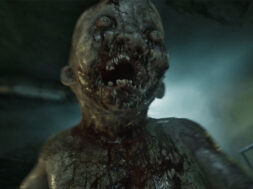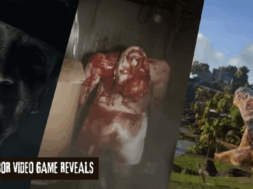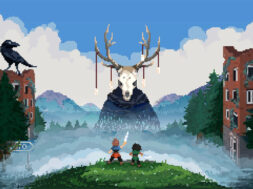Haf-Life 2, like many of the best sci-fi stories that came before and since its 2004 release, is a resistance narrative.
There wasn’t much resistance at the beginning, of course. Because how can you resist something you aren’t even aware of? After all, the Combine conquered Earth in just seven hours.
But, 20 years after humanity’s initial defeat at the hands of their technologically advanced oppressors, The Resistance is eking out a life in the shadows. Thanks to the efforts of Eli and Alyx Vance, Half-Life 2’s human opposition is surviving and fighting back. This period — the nascent stages of the growing resistance movement — will be the focus of the upcoming prequel, Half-Life: Alyx. And, when Half-Life 2 begins, The Resistance has coalesced around three primary locations: their hidden base in City 17, up the coast at Black Mesa East, and deep in the woods of White Forest.

The Resistance is a guerilla movement, led by a who’s who of ex-Black Mesa scientists. Eli Vance, Arne Magnusson, Isaac Kleiner — these men were present at the New Mexico facility when Gordon Freeman was an accidental party to the creation of the Resonance Cascade — the catastrophe that attracted the Combine to Earth in the first place. The Resistance grows where there are people, buoyed — like one of the game’s barrels in simulated water — by the most powerful technology humanity’s best and brightest can muster under the boot.
In Half-Life 2’s opening moments, Barney Calhoun, clad in Combine body armor, ushers Gordon out of the train station, unseen by the real Combine guards. It’s a lesson, early on, that the Resistance can be anywhere, as long as they’re out of sight. But, there’s one place The Resistance does not, under any circumstances, go: Ravenholm.
Often held up as one of the best examples of horror in a non-horror game, Ravenholm is Half-Life 2 at its darkest. Once a Resistance outpost, Ravenholm was shelled by the Combine, unleashing a horde of Headcrabs on its unsuspecting denizens. As explained in Half-Life: Opposing Force, these creatures fasten onto their host’s head and take complete control of their nervous system. And the Headcrabs did that, en masse, to the people of Ravenholm. Ominously, the ruined town is still connected to Black Mesa East via tunnel. When Gordon and Alyx pass by, she memorably tells him, “We don’t go to Ravenholm.”

But, Gordon Freeman does go to Ravenholm. When the Combine attacks Black Mesa East, Gordon is forced to flee down the tunnel. The village he finds has been overrun by zombies and Headcrabs (some of which have evolved into a leathery, poison variant). In the wake of the uprising, the village has been completely abandoned, left to these shuffling ghouls. Well, almost completely abandoned. Father Grigori, a mysterious, priestly figure, remains. He has established a darkly pastoral relationship with the zombies. He is their “shepherd.” They are his “flock.” He offers salvation by “exorcising” them, a process that seems to begin with his shotgun and end with his elaborate traps swinging circular saws through the faithful’s midsections.
To be clear, the presence of zombies alone isn’t what makes Ravenholm frightening. Half-Life 2 is riddled with Headcrab hosts. The bastards appear early on, shambling after Gordon in the City 17 sewers, and keep showing up throughout the game. And Ravenholm isn’t scary because you’re alone, either. Gordon spends most of the first half of the game in isolation, driving along the coast for long, melancholy stretches. It’s closer to say that Ravenholm is haunting because the atmosphere is fundamentally different than anywhere else.
The sun doesn’t shine in Ravenholm. The traditional European architecture that we see throughout the game becomes claustrophobic here. Where we have previously had space to explore the expansive coastline, here we are surrounded on all sides by brick and mortar. We’re isolated, yes. But it’s the isolation the zombies experience that infuses Ravenholm with horror.

As we’ve noted before, the sounds that the zombies make are unintelligible unless played backward. In reverse, the zombies are revealed to be shrieking, “Oh God, help me, please help me!” Given the limited scope of Half-Life lore, we don’t know exactly how Headcrab possession works. These lost souls may be in agony, or they may be remembering the agony of their initial possession. Either way, it serves as a reminder of the stakes of The Resistance’s fight. This is what happens if the Combine wins.
This village is horrifying because it is a reminder of what awaits humanity at the end of resistance. The people that lived there were fighters, an enclave of humans joining together to push back against the Combine’s oppression. And they were killed for their efforts and abandoned by their comrades.
Abandoned, maybe, carries a moral weight that I don’t intend. There’s likely nothing that could be done for the people of Ravenholm. The Resistance, after all, is led by scientists who previously occupied top government positions. If there was a way to save them, there’s no doubt The Resistance brain trust would. That Ravenholm remains indicates that Ravenholm must remain. There is nothing anyone can do for the people there. And, in that way, it is abandoned.
After all, we don’t go to Ravenholm.









